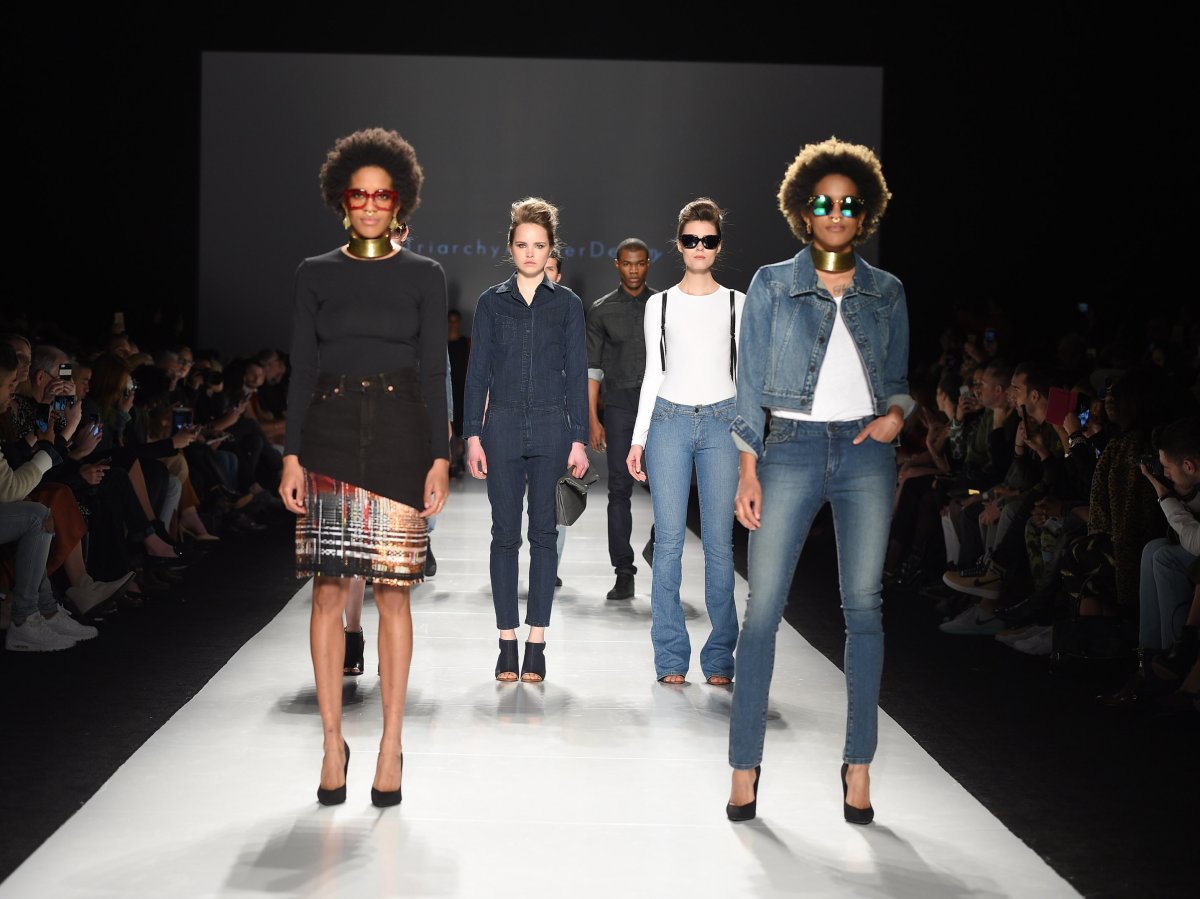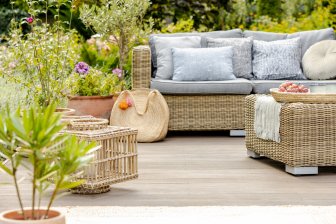Sustainable fashion used to have a, let’s call it, crunchy connotation. It conjured images of rough fabrics, patchwork techniques and unsophisticated styling, making it more faux pas than fashion.

In recent years, however, sustainable and eco-friendly design has turned a pivotal corner, elevating its style sense to the level of ready-to-wear while seeking out innovative approaches to lessening its carbon footprint and chemical load.
WATCH BELOW: Who made my clothes?: Fashion Revolution Week focusing on ethical clothing production

And it hasn’t happened a moment too soon. The fashion industry is the world’s second-largest polluter, after oil. That means even if you’re diligent about correctly separating your recycling, put solar panels on your roof and collect rainwater, and strictly buy local, organic produce, you’re inherently implicit in fashion’s shameful truth just by getting dressed every morning.
“It’s funny, because every day you get dressed, but research shows that even when a person adopts a more sustainable lifestyle — whether that’s because they’re more aware of it because they have children or because they’ve recently had an illness — fashion is the last thing they change,” says Kelly Drennan, founding executive director of Fashion Takes Action.
What are fashion’s areas of impact?
What’s perhaps most shocking, is how far-reaching the industry’s impact is. It touches on four major areas: waste, water, toxic chemicals and energy.
Here are some frightening statistics: the average T-shirt uses 400 to 600 gallons of water to produce (that’s equivalent to seven to 10 full bathtubs); a pair of jeans uses 1,800 gallons of water (that’s about 6,800 one-litre bottles); the fashion industry uses 1,600 chemicals in their dyeing processes, only one per cent of which have been approved by the Environmental Protection Agency; a T-shirt can travel up to 3,500 km before it lands on a consumer’s back.
But it’s not just the industry that’s at fault; consumers play a part, too. Drennan says that we consume 400 per cent more clothing today versus 20 years ago and the average garment is only worn seven times before it gets thrown out.
Fast fashion, pop culture, and traditional as well as social media have created a cult of consumerism that’s more rabid than ever before.
“No one wants to be seen or photographed in the same outfit, and because a lot of these clothes are made so cheaply and cost so little, it’s more convenient for consumers to dispose of their wardrobe,” Drennan says.
READ MORE: Cannabis beauty products to help you put your best face forward this 4/20
“At the same time, there’s no real education to consumers around the impact of what this level of consumption is doing to the planet.”
- Posters promoting ‘Steal From Loblaws Day’ are circulating. How did we get here?
- Canadian food banks are on the brink: ‘This is not a sustainable situation’
- Solar eclipse eye damage: More than 160 cases reported in Ontario, Quebec
- 3 women diagnosed with HIV after ‘vampire facials’ at unlicensed U.S. spa
While most people likely donate their old clothes to charities, the ones that are ripped or stained usually get thrown out and end up in a landfill or being incinerated. But the reality is, old clothes can be shredded and ground down to make new consumer products like paper, automotive and building insulation, underpadding for carpets and stuffing for pet bedding.
“Most people think of rags, but these old clothes can engage other sectors.”
Is one fabric better than another?
That’s a complicated question to answer. Cotton is the most common natural fabric used in fashion and is in nearly 40 per cent of our clothing. It’s also a very water-intensive crop, which means it needs a lot of water just to grow. In addition, non-organic cotton also uses pesticides, which inevitably seep into the water supply and soil.
Synthetic and man-made fibres may seem like a better choice from a water conservation standpoint, but they deliver a host of other complications. Namely, polyester (including nylon, spandex and acrylic) release microfibres into the water system. These tiny plastic fibres contribute to the overall plastic load in our lakes and rivers, and make their way into the food chain. To put it in perspective, washing a single synthetic clothing item can release 1,900 microfibres into the water.
“How we as consumers care for our garments has a big impact,” Drennan says. “Doing full loads of laundry, washing your clothes in cold water and hanging them to dry are easy ways to help reduce impact.”
Denim and leather are widely viewed as the most toxic fabrics because of the processing and dyeing techniques they undergo. To add insult to injury, the countries that have most of the leather tanneries, in particular, face worker safety concerns in addition to environmental ones.
READ MORE: Cow poop clothing could be fashion’s latest eco-trend
“A lot of tanneries are in countries like Indonesia, China and Bangladesh where workers are handling highly toxic substances without protective clothing. And the factories are located on waterways where they often dump the pour off, polluting the drinking water source for millions of people in the process.”
In fact, Drennan says, the dyeing practice has attained a certain dark lore in the industry.
“It’s been said that you can predict the next big colour trend based on the colour of the rivers near the manufacturing districts in China.”
What can consumers do?
Drennan espouses the seven Rs: reduce, reuse, recycle, rent (on websites like Rent frock Repeat and FreshRents), repurpose (YouTube is filled with videos that can show you how to transform your old clothes), repair (instead of throwing out ripped or torn garments, or ones that don’t fit as well anymore, take them to a tailor to be fixed), and most of all, research.
“Go to your favourite brand’s website and if they aren’t talking about their sustainability practices, that should be a red flag,” she says.
The Fashion Transparency Index is also a great resource to see who’s doing what right. Compiled by Fashion Revolution, a non-profit collective of designers, academics, writers, business leaders, policymakers, brands, retailers, marketers, producers, makers, workers and fashion lovers, it examines the sustainability practices of 150 top brands and retailers to educate consumers on how to shop and what to look for.
READ MORE: Nordstrom’s ‘rugged Americana’ jeans cause internet fury
Small steps make a big difference
The answer to creating a sustainable wardrobe is not to throw everything away and start from scratch, nor is it to stop buying clothing altogether. It’s the small changes that will add up to a big difference.
“There’s no brand that’s doing it perfectly and there’s no consumer who’s doing it perfectly. You do what you can, and once you start incorporating the small things into your day-to-day life, they’ll become habitual,” Drennan says.
Brands like Triarchy denim are doing their best to be as perfect as possible, and it’s an incentive that came about after creative director Adam Taubenfligel saw the 2015 documentary The True Cost and realized how damaging denim manufacturing was to the earth. It inspired him to change the entire model of his business.
“We now use Tencel, a wood fibre that uses 85 per cent less water to grow than cotton, and we found a factory that has a biological reactor in the wash process where the bacteria will eat the indigo to give it a lighter wash,” he says.
The latter is especially important since light denim washes require much more water.
In its new iteration, Triarchy is made up of two categories: their eponymous line that uses sustainable practices and the Atelier line that’s made entirely of vintage repurposed denim. Both also use buttons and rivets made from recycled metals, plastic labels made from recycled plastic water bottles, and leather labels made from scraps collected from handbag and shoe manufacturers.
READ MORE: 6 ‘greenwashed’ beauty labels explained
“Once we saw the realities of denim production, we realized that if we were going to continue doing what we love, we would have to do it sustainably,” he says. “The world doesn’t need another regular denim brand, so we decided to make it better.”
Although Triarchy’s price points may be unattainable for some (jeans start at $175), sustainability practices are also a big push for more affordable brands. However, Drennan cautions, not every brand can do everything perfectly.
“H&M is always a scapegoat,” she says. “Every time they announce they’re doing something good, like sourcing 100 per cent sustainable cotton, the media points out that they’re doing something else wrong. No one can be perfect.”
Nor can any consumer. It starts with education and making conscious choices, but at the end of the day, fashion is still always about looking good.
“Sustainable fashion is always about fashion first. We often talk about the fact that if a garment is ugly, it doesn’t matter how it’s made because it won’t sell,” Drennan says.
“You have to attract the consumer with style and then tell them the story. And that’s how it should go.”






Comments